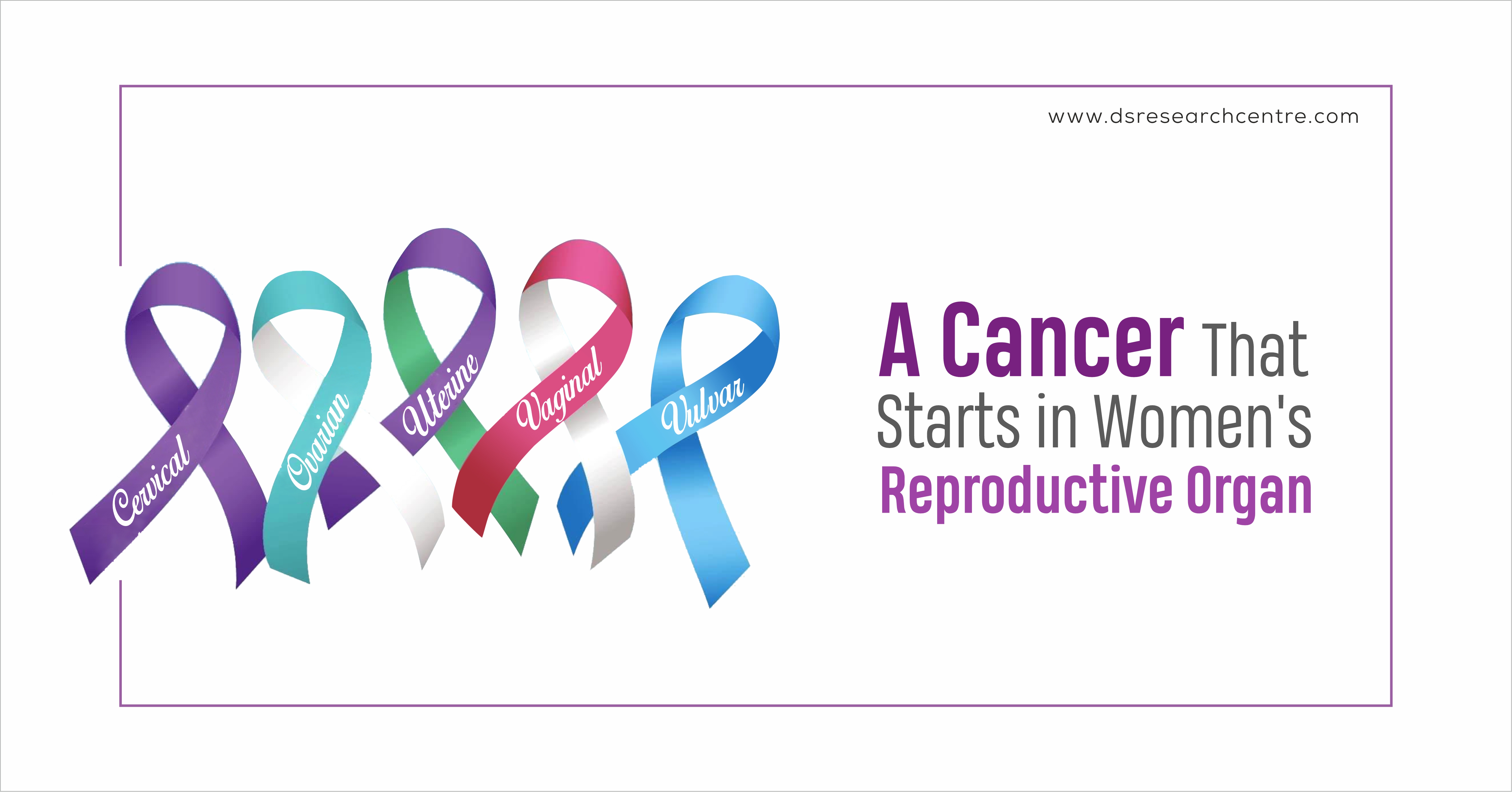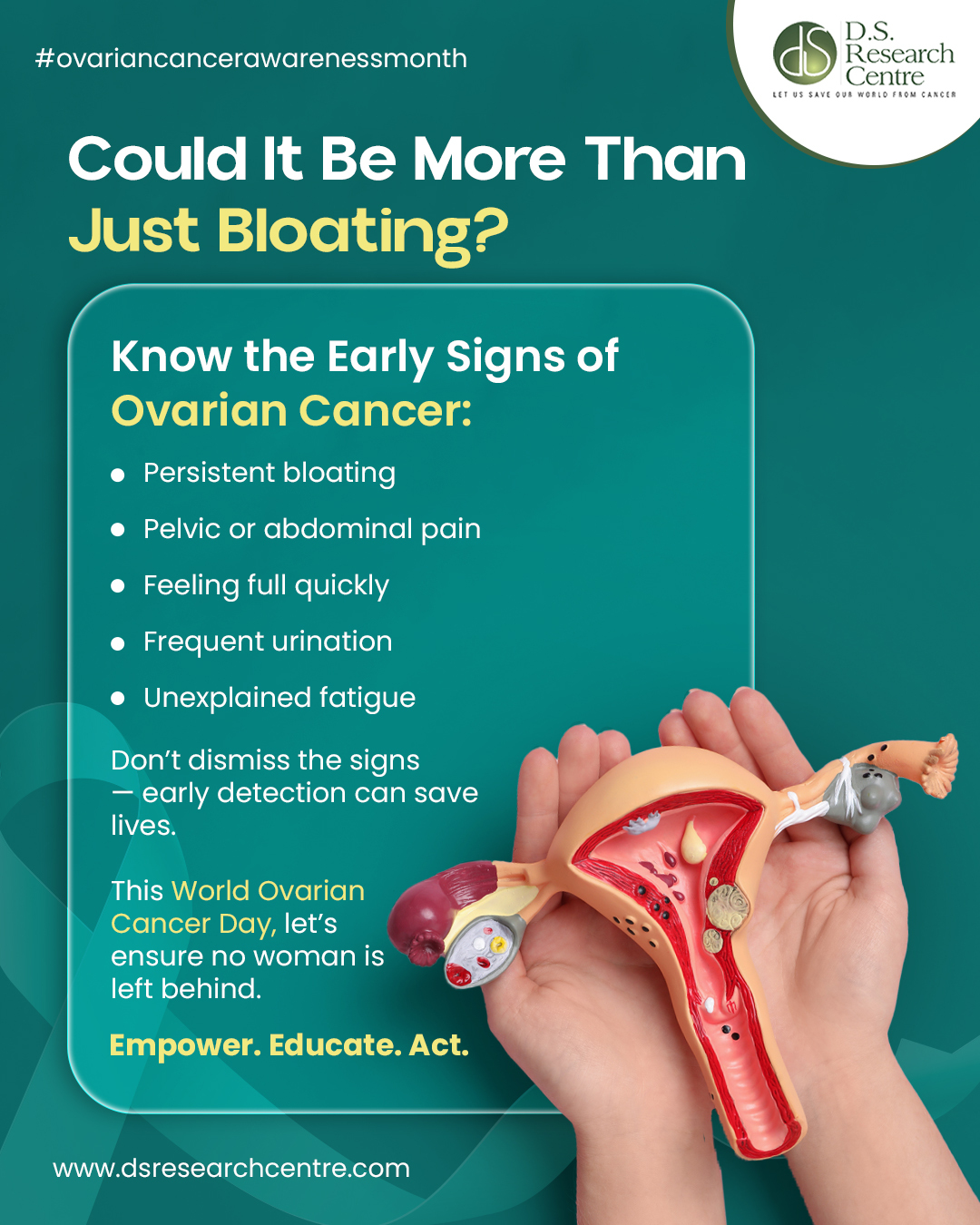The female reproductive
system in humans is largely constituted of five specific organs - Ovary,
Uterus, Cervix, Vagina, Vulva. The emergence of cancer in any of these organs
falls under the classification of Gynecologic Cancer. Cancer happens to be the second
leading cause of death in the world. It is treated with dread and apprehension.
However, with proper treatment, therapy, and medication, we can fight it.
No form of cancer is
100% preventable. However, proper management of risk factors - diet, physical
activity, awareness about hygiene and diseases, lifestyle choices, etc - can
lower the possibility of being diagnosed with cancer. Awareness about the
causes and symptoms of the disease is the primary step in managing the risk
factors, and early detection of cancer emergence. Let us briefly discuss the
same for the various forms of Gynecologic Cancer.
Ovarian Cancer.
The emergence of cancer
in the tissues of the ovary is termed as Ovarian Cancer. It is the second most
common form of Gynecologic Cancer, after Uterine Cancer. The equivalent of a
silent killer, it causes more deaths than any other form of Gynecologic Cancer.
The common symptoms include -
1.
Pelvic discomfort, or pain.
2.
Persistent indigestion, gas, and/or
nausea.
3.
Abdominal swelling, or bloating.
4.
Urinary urgency.
5.
Burning sensation while urinating, even
in the absence of infections.
6.
Changes in menstruation,
7.
Fatigue,
8.
Abdominal pain, mostly vague, diarrhea
and constipation,
9.
Unexplained weight loss or gain,
10. Formation
of abdominal lump or mass,
11.
Backaches.
Uterine Cancer.
Malignant neoplastic growth in the uterus is
termed as Uterine Cancer. The Uterus is where a foetus develops till birth.
Uterine Cancer has the highest rate of incidence amongst the various forms of
Gynecologic Cancer. Women above the age of fifty years, and post menopausal
women are at a higher risk of contracting Uterine Cancer. The common symptoms
include -
1.
Dyspareunia,
2.
Lower back-ache,
3.
Foul genital discharge,
4.
Dysuria,
5.
Pain in pelvic region,
6.
Weight loss,
7.
Change in bladder and bowel habits.
Cervical Cancer.
The occurrence of
cancerous cells in the birth canal, or cervix, is known as Cervical Cancer. The
major risk factors include smoking, multi parity, multiple sexual partners,
intercourse at an early age, and a weakened immune system. The common symptoms
include -
1.
Post-coital bleeding,
2.
Foul vaginal discharge,
3.
Abnormal bleeding,
4.
Unilateral leg swelling or pain,
5.
Pelvic mass,
6.
Pelvic pain,
7.
Gross cervical lesion.
Vaginal Cancer.
The occurrence of
malignant tissue growth in the vaginal region is termed Vaginal Cancer.
Tumors in the vagina commonly arise in the posterior wall and spread to the
cervix or vulva. The risk factors involved include advancing age, previous
pelvic radiation, vaginal trauma, genital warts (HPV infection), HIV infection,
chronic vaginal discharge, smoking, and presence of Cervical Cancer. The common
symptoms include -
1.
Painless vaginal bleeding (often after
sexual intercourse),
2.
Abnormal vaginal discharge,
3.
Dyspareunia,
4.
Dysuria,
5.
Swelling in the legs,
6.
Constipation,
7.
Pelvic pain.
Vulvar Cancer.
Abnormal neoplastic
growth on the external female genitalia is termed Vulvar Cancer. It is the
fourth most common Gynecologic Cancer after endometrial, ovarian, and cervical
cancer. It typically occurs in women between thirty to forty years of age. It
is usually preceded by precancerous changes. These changes are termed Vulvar
Intraepithelial Neoplasia (VIN). The causes and risk factors include smoking,
Human Papilloma Virus (HPV), Infection, Immunosuppression, chronic vulvar
conditions such as lichen sclerosis, prior history of cervical cancer, multiple
sex partners, HIV, history of breast cancer, Diabetes mellitus, and obesity.
The symptoms include -
1.
Occurrence of ulcerous mass,
2.
Pruritus,
3.
Vulvar bleeding or discharge,
4.
Dysuria,
Enlarged groin lymph nodes.
AN OVERVIEW.
|
 OVARIAN CANCER OVARIAN CANCER
|
 UTERINE CANCER UTERINE CANCER
|
 VULVAR CANCER VULVAR CANCER
|
 VAGINAL CANCER VAGINAL CANCER
|
 CERVICAL CANCER CERVICAL CANCER
|
|
.Loss of appetite or
feeling full
quickly
.Indigestion, bloating,
belching, nausea
.Frequent
micturition
.Pain in
pelvic region
or heaviness
|
.Post-menopausal
bleeding
.Inter-
menstrual bleeding
.Irregular
bleeding
.Heavy
menstrual
bleeding
.Pelvic
Pain
|
.Irritation,
itching &
burning
sensation
near Vulva
.Rash,
sores
& warts
near vulva,
Changes in skin color.
|
.Pain or
bleeding
during inter-
course
.Chronic
constipation
.Pelvic
Pain
.Vaginal
lump or
mass
|
.Foul
discharge
.Yellow or
reddish
discharge
.Post-menopausal
bleeding
.Pain or
bleeding during intercourse.
|
EVALUATING RISK FACTORS.
|
Risk Factor
|
|
Prevention
& Screening Tips
|
|
FAMILY
HISTORY
|
Nearly
15% ovarian and breast cancers are linked with BRCA1 and BRCA2 mutation,
inherited genetically.
|
Genetic
tests to evaluate risks.
|
|
OBESITY
|
Obesity
causes increased estrogen levels, and chronic inflammation, thus increasing
the risk of cancer, especially Endometrial Cancer.
|
Healthy
diet & exercise.
|
|
AGE
|
Increases
with aging, common after 60 yrs of age.
|
Regular
visit to the gynecologist, especially after menopause. The alerting sign will
be vaginal bleeding post menopause.
|
|
HPV
|
STD,
causes Cervical, Vulvar, Vaginal Cancer.
|
PAP
smear test, HPV vaccine.
|
|
GYNECOLOGIC
HISTORY
|
Multigravida, Multi
parity, irregular menstrual cycle, abortions, and complications during child
birth.
|
|
Ensuring Quality Of Life After Surviving Gynecologic Cancer.
Quality
of life involves multiple facets of a Gynecologic Cancer survivor’s life. These
include -
·
Physical
well-being,
·
Emotional
well-being,
·
Social
well-being,
·
Functional
well-being.
Treatment
procedures for Gynecologic Cancers have focused mostly on prolonging the
survival of patients. Taking up validated measures for improving the quality of
life in survivors should be concurrently encouraged. Prognostic factors and
psychological treatment methods show a positive impact on the possibility of
survival. Studies show that modified diet and lifestyle choices help women
overcome post-treatment toxicities.
It
is imperative to be aware of the importance of early diagnosis through
effective screening. Moreover, it is important to include measurements for the
quality of life in clinical practice. These may be crucial in evaluating
certain therapeutic interventions, and the consequences of the disease on the
lives of these women. Through measurement of the quality of life, it may be
possible to provide alternative measures that mitigate the secondary effects of
treatment.
So,
to formulate an infallible course of action for the prevention, early
detection, treatment procedures after detection, and post-treatment improvement
in quality of life, an integrated multidisciplinary approach should be chalked
out to fight the trepidation of the dreaded disease that is Cancer.
Awareness is the Starting
Point Of All Positive Changes In Life…








Posted on April 15, 2016
Posted on April 15, 2016